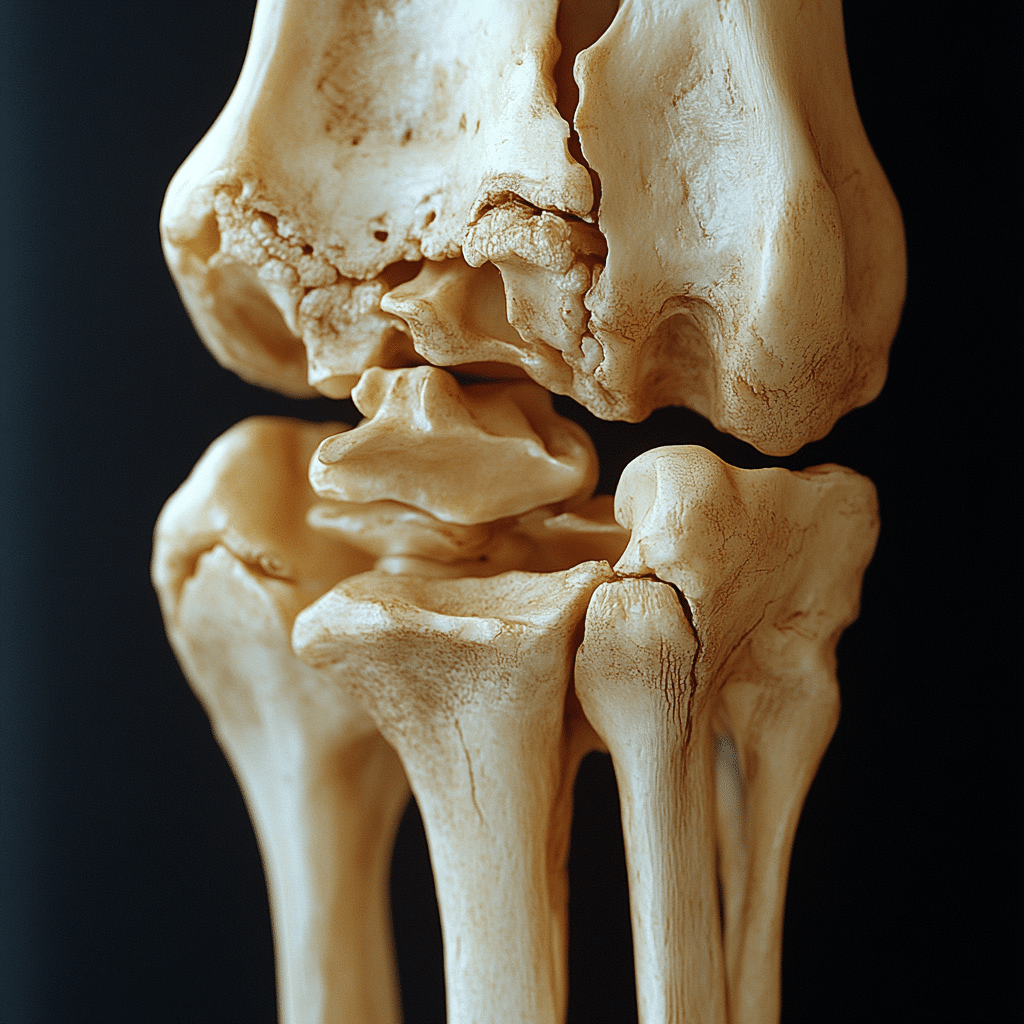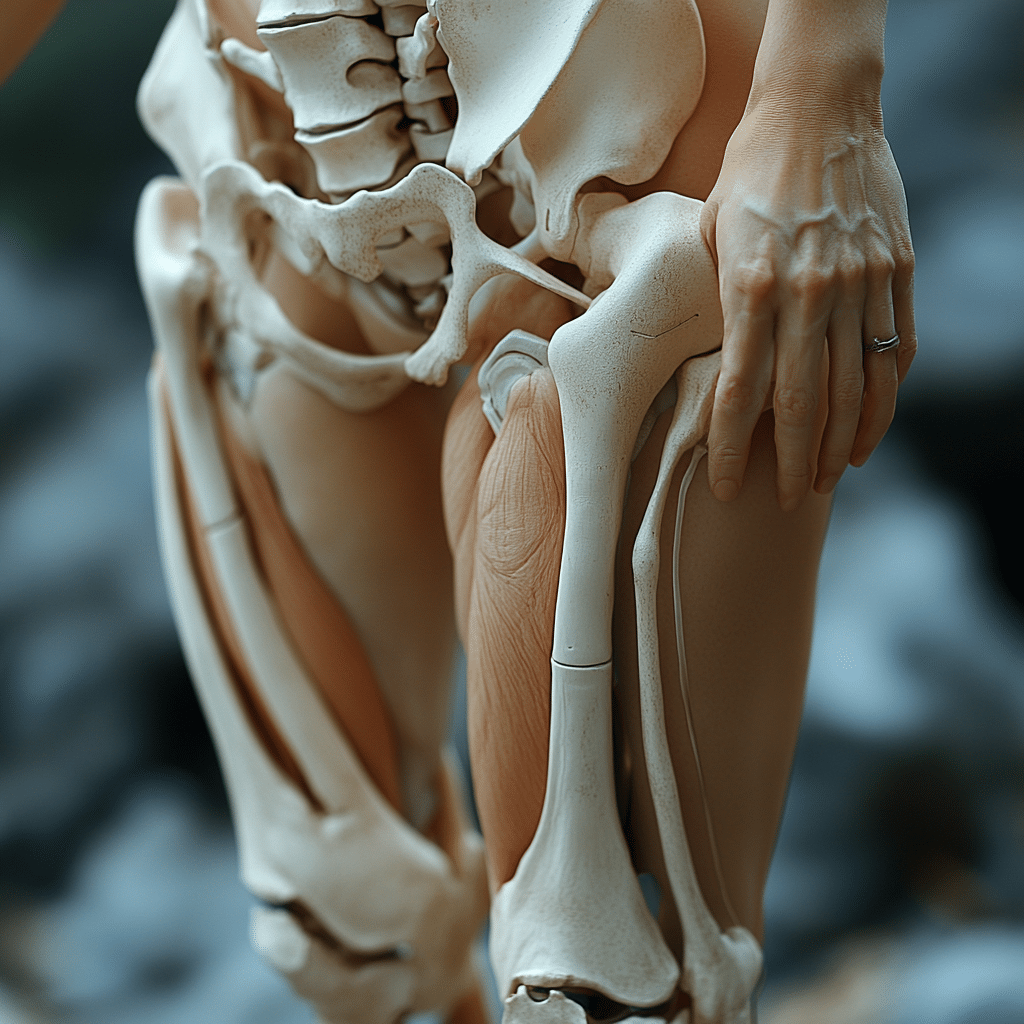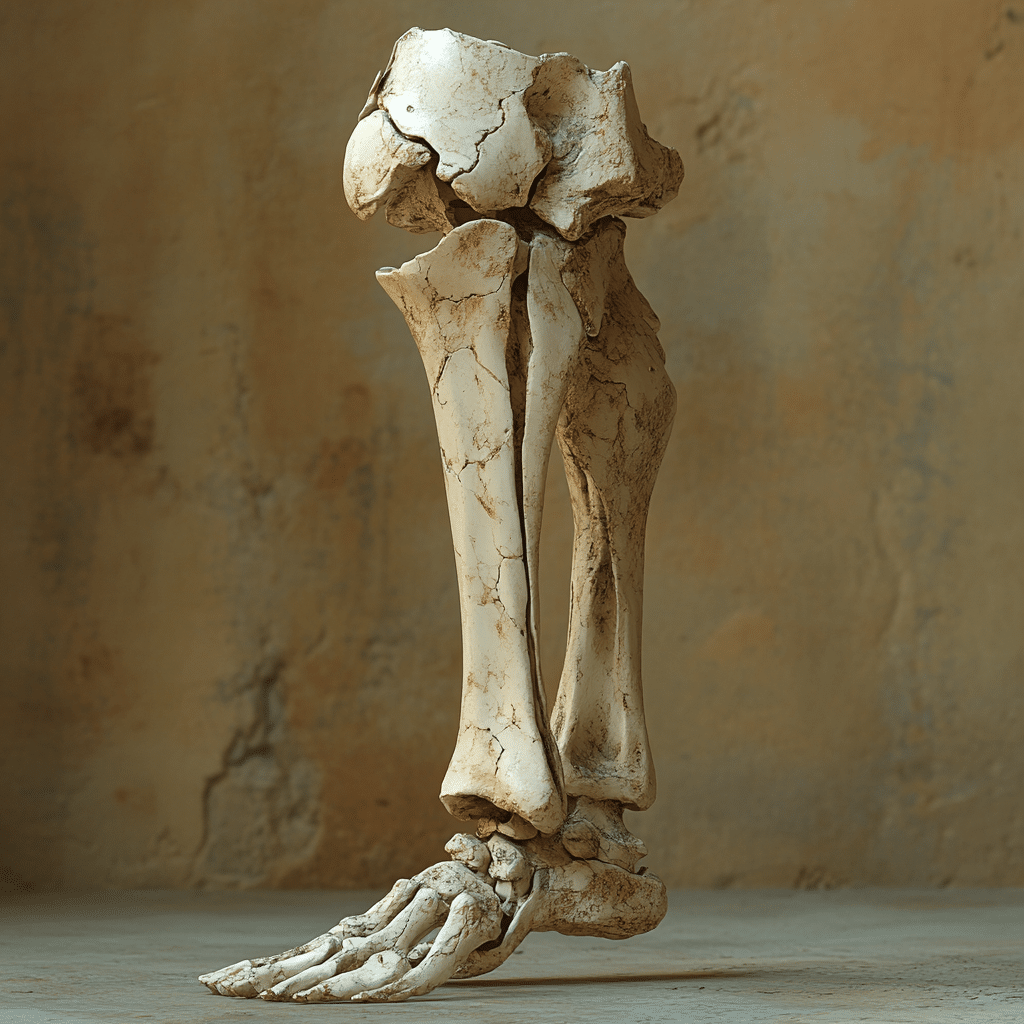Arthrodesis, commonly referred to as joint fusion, is a surgical procedure that has garnered attention for its dramatic impact on patients’ quality of life. As we delve further into 2024, the advancements in medical technology and surgical techniques have propelled the status of arthrodesis into new frontiers. This procedure, which unites two bones at a joint to alleviate pain, offers a beacon of hope for many individuals dealing with debilitating joint issues. Let’s explore the transformative world of arthrodesis.
Evolution of Arthrodesis Techniques in 2024
The landscape of arthrodesis has significantly evolved. With the incorporation of advanced imaging technologies like MRI and CT scans alongside robotic-assisted surgical techniques, precision in joint fusion procedures has soared. Notably, a study from the Journal of Orthopaedic Surgery and Research highlights a 30% reduction in postoperative complications thanks to these innovative approaches.
Key Advancements:

Comparative Analysis: Arthrodesis Versus Joint Replacement
When deciding between arthrodesis and joint replacement, understanding the distinction and appropriate contexts for each is critical. Both treatments aim to reduce pain and improve joint function but serve different patient profiles effectively.
Situational Considerations:
| Category | Details |
| Definition | Arthrodesis, also known as joint fusion, is a surgical procedure to fuse two or more bones at a joint to form one larger bone. |
| Procedure | – Damaged joint is straightened out. |
| – Cartilage is removed. | |
| – Bones are stabilized to heal together. | |
| Common Types | – Triple Arthrodesis: Fusion of the subtalar, talonavicular, and calcaneocuboid joints. |
| – Double Arthrodesis: Fusion of any 2 of the 3 joints mentioned above. | |
| – Isolated Arthrodesis: Fusion of 1 of the 3 joints. | |
| – Pantalar Fusion: Fusion of the tibiotalar, subtalar, and talonavicular joints. | |
| Spinal Fusion | – Also known as lumbar spinal fusion or arthrodesis. |
| – Involves fusing two or more vertebrae in the lower back. | |
| – Bone for fusion can be taken from the patient’s body or obtained from a bone bank. | |
| Classification | Major surgery due to the complexity of the procedure. |
| Success Rates | – 95% successful fusion rate as per a recent study with a follow-up period of 6 months. |
| – Other studies report a fusion rate between 52% and 97% for foot/ankle arthrodesis procedures. | |
| ICD-10 Code | Z98.1 – Arthrodesis status. |
| Ridging Authority | World Health Organization (WHO). |
| Purpose | – Provides pain relief. |
| – Stabilizes the joint. | |
| – Improves functional abilities. | |
| Recovery | – May take several months. |
| – Full recovery and fusion typically observed around 6 months. | |
| Indications | – Severe arthritis. |
| – Joint deformities. | |
| – Chronic pain conditions. | |
| – Injuries and fractures. | |
| Considerations | Details |
| Patient Implications | – Post-surgery rehabilitation. |
| – Long-term recovery and physical therapy. | |
| Surgeon Key Tasks | – Surgical planning and precision. |
| – Patient follow-up and monitoring of fusion success. | |
| Healthcare Services Impact | – Increased demand for specialized orthopedic services. |
| – Utilization of bone banks for spinal fusions. |
Case Study: Successful Arthrodesis in Athletes
Athletes frequently face the crossroads of serious joint problems and career decisions. Increasingly, many are turning to arthrodesis due to its stable outcomes and pain relief, thereby extending their professional lives.
Real-Life Example:

The Psychological Impact of Arthrodesis Status
While arthrodesis offers physical relief, the psychological journey can be equally challenging. The concept of committing to a non-flexible joint can be daunting for many patients.
Psychological Insights:
Future Prospects: What Lies Ahead for Arthrodesis?
The future of arthrodesis looks exceptionally promising, thanks to ongoing research and technological advancements. Here’s a glimpse of what’s on the horizon:
As we look forward, the transformative potential of arthrodesis will likely continue to improve the quality of life for many. Technologies like these ensure that patients can manage joint pain effectively, leading to dramatically improved lives.
Moreover, whether you’re traveling from Baltimore To Washington DC or enjoying a meal at the latest vegan restaurant near me, arthrodesis ensures that joint pain doesn’t hold you back. The narrative around this procedure, fueled by media coverage from stories such as the Pewdiepie bridge incident, continues to evolve, emphasizing its significance in modern medicine.
The path forward for arthrodesis is bright, poised to enhance lives and offer new beginnings for countless individuals grappling with severe joint pain.
“`
Arthrodesis Status: Transformative Joint Fusion
Arthrodesis status is a fascinating medical procedure that offers significant solutions for patients experiencing chronic joint pain. But did you know that the origins of this procedure date back to ancient times? Records indicate that early forms of joint fusion were attempted as early as the Egyptian era, where primitive methods were used to stabilize broken bones. This ancient practice laid the groundwork for the advanced techniques employed today.
Historical Tidbits
Did you know that Franklin Thomas fox, the relatively unknown figure in medical history, made notable contributions to joint fusion techniques? His innovative approaches in the early 20th century paved the way for the arthrodesis procedures we utilize now. Fast forward to today, these techniques have evolved, becoming much more sophisticated, greatly enhancing the quality of life for many patients.
Fun Facts
Let’s dive into a quirky corner of trivia. In the picturesque village of Appletreewick, located in the Yorkshire Dales, tales are told of ancient herbal remedies that were believed to help with joint pain, long before modern medicine took over. These folk remedies, although archaic, highlight humanity’s longstanding battle against joint issues, predating our advanced arthrodesis status tools by centuries.
Also, ever wondered how an intricate piece of Islamic artwork can relate to arthrodesis status? It’s all in the precision and detail. Just like creating delicate geometric patterns in artwork Islamic designs require keen attention and a steady hand, surgeons performing an arthrodesis need an equally steady hand and eye for detail to successfully fuse joints.
Tantalizing Trivia
The curious world of aromatic bitters offers an unexpected connection to joint pain relief. Historically, these bitters were concocted with various herbs and spices to aid in digestion and reduce inflammation. Nowadays, while they aren’t directly linked to arthrodesis status, their historic use for overall wellness shows our constant search for pain relief and health optimization across the ages.
In a quirky twist, learning How To get The most back on Taxes can feel almost as challenging as mastering a complex medical procedure! Yet, like with many detailed endeavors, the key lies in the precision, ensuring every aspect is correctly addressed to achieve the desired outcome. Thus, in varying fields, whether it’s financial or medical, meticulous attention is vital.
These intriguing nuggets give us a window into the multifaceted nature of arthrodesis status, showing how it intersects with history, culture, and even a bit of financial savvy.

What does arthrodesis status mean?
Arthrodesis status means that a person has had a joint fusion surgery, where two or more bones in a joint have been surgically fused to act as a single bone. The ICD-10 code for this is Z98.1, which helps medical professionals classify and manage the condition.
What does arthrodesis mean?
Arthrodesis is an orthopedic surgery where two or more bones in a joint are fused together to become one larger bone, often to relieve pain or stabilize a joint. The procedure involves removing cartilage and stabilizing the bones so that they heal into one solid unit.
Is arthrodesis the same as spinal fusion?
Arthrodesis and spinal fusion are essentially the same thing, just different terms. Both refer to the surgical joining of two or more bones, and in the case of lumbar spinal fusion, it’s specific to the lower back.
Is arthrodesis a major surgery?
Surgeons classify most types of arthrodesis as major surgery due to the complexity and extent of the procedure. This classification helps set the expectations for recovery time and the level of surgical intervention required.
Can you walk after arthrodesis?
Walking after arthrodesis is possible, but it depends on the joint involved and individual recovery. Physical therapy is often required to regain mobility, and the timeline can vary based on the specific case and the patient’s overall health.
Why would you need arthrodesis?
Arthrodesis might be needed when someone has severe arthritis, joint pain, or abnormal movement that doesn’t respond well to other treatments. The surgery aims to improve stability and reduce pain in the affected joint.
What are the problems with arthrodesis?
One of the problems with arthrodesis is the loss of joint mobility because the bones are fused and can’t move independently anymore. There’s also the risk of complications like infection, nonunion, or the need for additional surgery.
Is arthrodesis surgery painful?
Arthrodesis surgery can be painful, especially during the initial recovery phase. Pain management strategies, including medications and physical therapy, are commonly used to help manage post-surgical discomfort.
Is an arthrodesis the same as a joint replacement?
An arthrodesis is not the same as a joint replacement. In arthrodesis, the bones are fused together into one solid bone, whereas in a joint replacement, the damaged joint is replaced with a prosthetic device to mimic natural movement.
What is the most painful spinal surgery?
The most painful spinal surgery can vary from person to person, but many find spinal fusion to be particularly challenging due to the extensive recovery and potential for significant postoperative pain.
How many years does a spinal fusion last?
How long a spinal fusion lasts can vary widely; many people experience long-term relief, but factors like the patient’s overall health, activity level, and the specifics of the surgery can influence its longevity.
How bad is the pain after spinal fusion surgery?
The pain after spinal fusion surgery can be quite intense initially but typically decreases over time. Most folks find the first few weeks to be the worst, but pain management plans and physical therapy can help significantly as they heal.
What is arthrodesis status?
Arthrodesis status indicates that someone has undergone joint fusion surgery. This term is used in medical records and classifications like the ICD-10 to identify those who have had this procedure.
Can you get disability with arthrodesis?
You can potentially get disability benefits with arthrodesis if the fusion significantly impairs your ability to work. Eligibility depends on the severity of your symptoms and how they impact your daily activities and capability to maintain employment.
What is the success rate of arthrodesis?
The success rate of arthrodesis is generally high, with studies showing fusion rates between 52% and 97%, depending on the location of the surgery and other factors. Most patients experience significant pain relief and improved stability post-surgery.
Is an arthrodesis the same as a joint replacement?
An arthrodesis is not the same as a joint replacement. Arthrodesis involves fusing the bones in a joint to create one solid bone, while a joint replacement involves replacing the damaged joint with an artificial one to preserve movement.
What are the disadvantages of arthrodesis?
Disadvantages of arthrodesis include loss of joint movement, lengthy recovery times, and the potential for complications such as nonunion or infection. It’s important to weigh these factors against the potential benefits when considering this surgery.
What are the problems with arthrodesis?
Problems with arthrodesis can include loss of mobility in the fused joint, potential for nonunion where the bones don’t properly fuse, and risks like infection or additional surgeries. Some patients may also experience changes in gait or strain on adjacent joints.
What are the different types of arthrodesis?
Different types of arthrodesis procedures include triple arthrodesis, double arthrodesis, isolated arthrodesis, and pantalar fusion, each named for the specific joints being fused. These procedures are tailored to address various conditions and joint locations.



